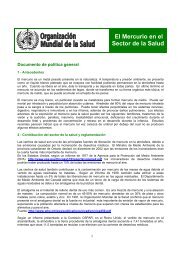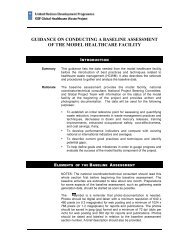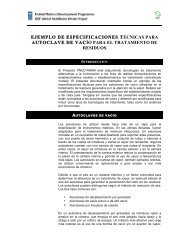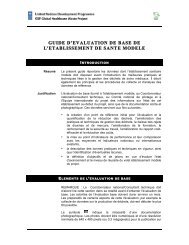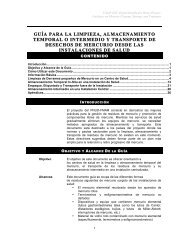Latvia
Latvia
Latvia
You also want an ePaper? Increase the reach of your titles
YUMPU automatically turns print PDFs into web optimized ePapers that Google loves.
Health systems in transition<br />
<strong>Latvia</strong><br />
now for the most part rented out by independent primary care practitioners, or<br />
alternatively they have become self-managing health centres, while hospitals<br />
have similarly become self-managing institutions. Local governments are<br />
now mainly responsible for ensuring access to health care services, promoting<br />
healthy lifestyles, controlling alcoholism, maintaining old-age health facility<br />
buildings, establishing and maintaining shelters for homeless people and orphan<br />
children, as well as education. In addition, local governments reimburse health<br />
care expenses incurred by low-income patients, exempting them from patient<br />
fees.<br />
Health care legislation does not define specific functions and responsibilities<br />
for local governments, but rather notes that they have a general responsibility<br />
with respect to health care.<br />
Institutions of health services<br />
Inpatient and outpatient health care in <strong>Latvia</strong> is provided by state- and local<br />
government-owned institutions, private clinics and hospitals, and individuals.<br />
Independently of the type of property, all providers who provide services within<br />
the statutory system are financed and regulated by government institutions<br />
according to the same principles. Health care is subdivided into the three<br />
conventional levels, as listed here.<br />
• PHC is the level at which the patient has the first contact with health<br />
care providers. PHC is provided by family doctors, paediatricians, PHC<br />
internists and PHC nurses or doctors’ assistants. Every inhabitant of <strong>Latvia</strong><br />
must register with one PHC doctor, who serves as gatekeeper to the health<br />
care system (Section 6.2 Patient pathways). PHC is financed according to<br />
mixed weighted capitation principles (Section 3.7 Payment mechanisms).<br />
PHC practitioners can be independent (private) providers or can work<br />
within private or public outpatient clinics (Section 6.3 Primary ambulatory<br />
care).<br />
• Secondary health care involves outpatient and inpatient care, which includes<br />
emergency, acute or planned diagnostics, treatment and rehabilitation up to<br />
the point where successive treatment can be pursued at the PHC level; it<br />
is provided by state, local government or private institutions (Section 6.4<br />
Specialized ambulatory care/inpatient care).<br />
• Tertiary health care is highly specialized, using high technologies for serious<br />
health conditions with high-risk treatments and for rare diseases, and is<br />
provided by public institutions at state level.<br />
43







